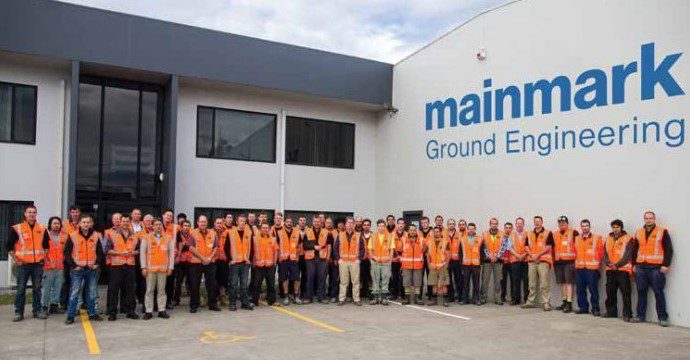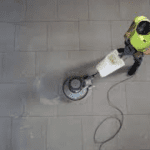To identify the type of soil present and to analyze its expected behavior, geophysical testing is used in geotechnical engineering. As part of its project selection and design process, Mainmark utilizes these tests. It is possible to determine whether the objectives set forth in the design were achieved by comparing the ground investigation results before and after the project was completed.
As part of a Mainmark solution, re-leveling involves lifting and re-leveling a structure with cementitious grout or expanding resin. Re-leveling approaches have the positive effect of improving the soil near injection points. Unlike other mechanical lifting techniques, our methods densify the soil beneath the foundation, which increases the bearing soil’s strength.
Prior to and after floor level surveys are the primary validation measures for re-leveling projects. In order to demonstrate that the re-level process has not had a negative impact, a Dynamic Cone Penetration (DCP) test is also conducted. A DCP test is conducted before and after re-leveling the structure, similar to a floor level survey. This test enables us to measure and define the increase in the soil’s bearing capacity as a result of injection works by comparing the before and after results.
Besides improving shallow bearing capacity, Mainmark also offers stand-alone solutions for weak bearing soils. In these projects, densification is specifically targeted to increase bearing capacity for shallower depths. During the initiation of a project, the DCP tests provide information on the soil’s pre-improvement bearing capacity (kPa) as well as the desired level of improvement. The DCP tests validate whether the target increase in bearing capacity was achieved.
The Terefirm® ground improvement solution also requires geophysical testing. Terefirm is a technique used to increase bearing capacity (depths above 3 m) as well as to mitigate the effects of liquefaction. As of now, ground improvement projects have treated soils as deep as 12 m below ground level, which required geophysical testing tools capable of reaching greater depths.
During seismic events, it is also important to understand the soil types at the site and their expected behavior.
For Mainmark’s ground improvement technique to be deemed viable, initial geophysical tests must be conducted. Based on this assessment, target design strengths are determined and parameters for measuring improvement are established. It is imperative that these parameters are defined prior to the commencement of a project so that the geophysical testing requirements can be determined. There are, however, two ground investigation techniques that are consistent.
A cone penetrometer test (CPT) is conducted on every Tere Firm ground improvement project. A design earthquake can be predicted based on the soil type, soil strength, liquefaction triggering potential, and predicted settlement based on this test. A percentage increase or set target values are given as improvement targets. Based on the targets, the injection design is developed, and the post-injection CPT results are compared with the initial tests.
Direct-Push Cross-Hole (DPCH) is another method of liquefaction mitigation. It is used to determine the soil’s stiffness by determining its shear wave velocity. An improvement level can be determined by comparing before and after injection results, similar to a CPT.
In addition, all post-improvement tests are compared together to determine how well a structure performs after the Terefirm ground improvement is applied.






